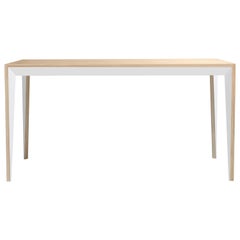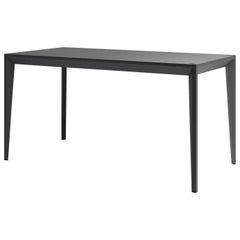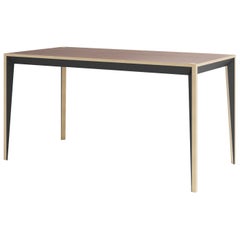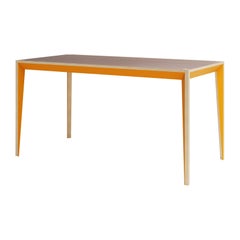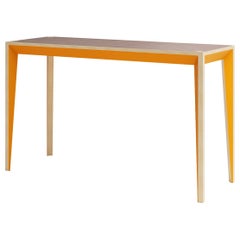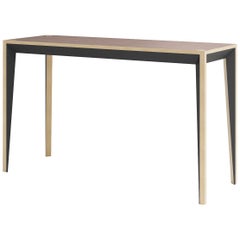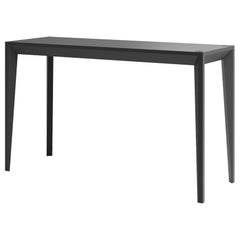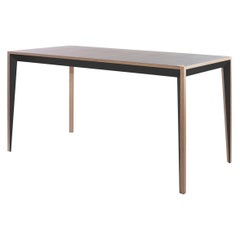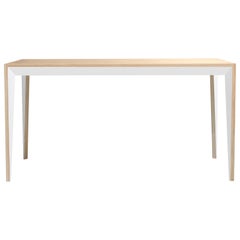Mimi Desk
2010s Italian Minimalist Desks and Writing Tables
Birch, Oak, Plywood
2010s Italian Minimalist Desks and Writing Tables
Plywood, Birch, Oak
2010s Italian Minimalist Desks and Writing Tables
Beech, Oak, Plywood
2010s Italian Modern Desks and Writing Tables
Birch, Oak, Plywood
2010s Italian Minimalist Desks and Writing Tables
Beech, Oak, Plywood
2010s Italian Minimalist Console Tables
Birch, Walnut, Plywood
2010s Italian Minimalist Console Tables
Birch, Walnut, Plywood
2010s Italian Minimalist Console Tables
Birch, Oak, Plywood
Recent Sales
2010s Italian Minimalist Desks and Writing Tables
Beech, Walnut, Plywood
2010s Italian Minimalist Desks and Writing Tables
Birch, Oak, Plywood
2010s Italian Minimalist Desks and Writing Tables
Beech, Oak, Plywood
Vintage 1960s Office Chairs and Desk Chairs
Cotton
People Also Browsed
2010s American Wall Lights and Sconces
Metal
21st Century and Contemporary Vietnamese Neoclassical Beds and Bed Frames
Wood
Vintage 1970s Italian Armchairs
Metal
Antique 19th Century French Country Dining Room Tables
Iron
Mid-20th Century German Mid-Century Modern Lounge Chairs
Metal
2010s British Organic Modern Wall Mirrors
Brass
21st Century and Contemporary Portuguese Mid-Century Modern Night Stands
Onyx, Statuary Marble, Quartz, Travertine, Marble, Brass
Early 20th Century English Convex Mirrors
Mirror, Wood
2010s Indian Russian and Scandinavian Rugs
Wool
Vintage 1960s Swedish Scandinavian Modern Wall Mirrors
Mirror, Pine
Vintage 1950s French Mid-Century Modern Side Tables
Brass
21st Century and Contemporary Indian Side Tables
Aluminum
2010s Italian Chandeliers and Pendants
Plastic
2010s Italian Modern Chandeliers and Pendants
Brass
Vintage 1970s Swedish Scandinavian Modern Side Tables
Pine
Vintage 1970s Italian Mid-Century Modern Sectional Sofas
Leather, Plastic
Mimi Desk For Sale on 1stDibs
How Much is a Mimi Desk?
A Close Look at Minimalist Furniture
A revival in the popularity of authentic Minimalist furniture is rooted in history while reflecting the needs and tastes of the 21st century. Designer Ludwig Mies van der Rohe’s aphorism that “less is more” influenced the evolution of 20th-century interiors with an emphasis on function and order. This was a shift from the 19th century, with its lavish Victorian decorating, and was spread around the world through design styles including Bauhaus and brutalism.
Yet Minimalism was present in furniture design long before the clean lines of modernism, such as in the simple and elegant utility of Shaker furniture. Although the Minimalist art movement of the 1960s and ’70s had little crossover with furniture design, artist Donald Judd was inspired by the Shakers in creating his own spare daybeds and tables from sturdy wood. (Judd, whose advocacy of symmetry also informed his architectural projects, furnished his Manhattan loft with unassuming but poetic works by iconic modernist designers such as Gerrit Rietveld and Alvar Aalto.)
Understatement rather than ornamentation and open space instead of clutter are central themes for a Minimalist living room and bedroom. As opposed to Maximalism, the focus for Minimalist furniture and decor is on simplicity and considering the design and purpose of every object.
Furnishings are usually made in neutral or monochrome colors and pared down to their essentials — think nesting coffee tables, sectional sofas and accent pieces such as ottomans. And Minimalist ceramics can help achieve a decor that is both timeless and of the moment. The organic textures and personalization of handmade craftsmanship associated with these works have served as a sort of anti-Internet to screen-weary decorators. That said, while the thoughtful ergonomics of Scandinavian modern furniture, with its handcrafted teak frames, are at home in Minimalist spaces, so are the quietly striking pieces by Japanese designer Naoto Fukasawa that employ industrial materials like stainless steel, aluminum and plastic.
Minimalist furniture is not for making flashy statements; it boasts subdued appeal and excels at harmonizing with any room. And, as it encompasses many different movements and eras of design, it also never goes out of style, owing to its tasteful refinement.
Find a collection of Minimalist tables, seating, lighting and more furniture on 1stDibs.
Finding the Right Desks-writing-tables for You
Choosing the perfect writing desk or writing table is a profoundly personal journey, one that people have been embarking upon for centuries.
Queen Atossa of Persia, from her writing table circa 500 B.C., is said to have been the originator of the art of handwritten letters. Hers was reportedly the first in a long and colorful history of penned correspondence that grew in popularity alongside literacy. The demand for suitable writing desks, which would serve the composer of the letters as well as ensure the comfort of the recipient naturally followed, and the design of these necessary furnishings has evolved throughout history.
Once people began to seek freedom from the outwardly ornate styles of the walnut and rosewood writing desks and drafting tables introduced in the name of Queen Victoria and King Louis XV, radical shifts occurred, such as those that materialized during the Art Nouveau period, when designers longed to produce furniture inspired by the natural world’s beauty. A prime example is the work of the famous late-19th-century Spanish architect Antoni Gaudí — his rolltop desk featured deep side drawers and was adorned with carved motifs that paid tribute to nature. Gaudí regularly combined structural precision with decorative elements, creating beautiful pieces of furniture in wood and metal.
Soon afterward, preferences for sleek, geometric, stylized forms in furniture that saw an emphasis on natural wood grains and traditional craftsmanship took hold. Today, Art Deco desks are still favored by designers who seek to infuse interiors with an air of luxury. One of the most prominent figures of the Art Deco movement was French decorator and furniture designer Émile-Jacques Ruhlmann. With his use of neoclassical motifs as well as expensive and exotic materials such as imported dark woods and inlays of precious metals for his writing desks, Ruhlmann came to symbolize good taste and modernity.
The rise in appreciation for Scandinavian modernism continues to influence the design of contemporary writing desks. It employs the “no fuss” or “less is more” approach to creating a tasteful, sophisticated space. Sweden’s master cabinetmaker Bruno Mathsson created gallery-worthy designs that are as functional as they are beautiful. Finnish architect Alvar Aalto never viewed himself as an artist, but, like Mathsson, his furniture designs reflected a fondness for organic materials and a humanistic approach. Danish designers such as Hans Wegner introduced elegant shapes and lines to mid-century desks and writing tables, often working in oak and solid teak.
From vintage desks to contemporary styles, 1stDibs offers a broad spectrum of choices for conducting all personal and business writing and reading activities.
